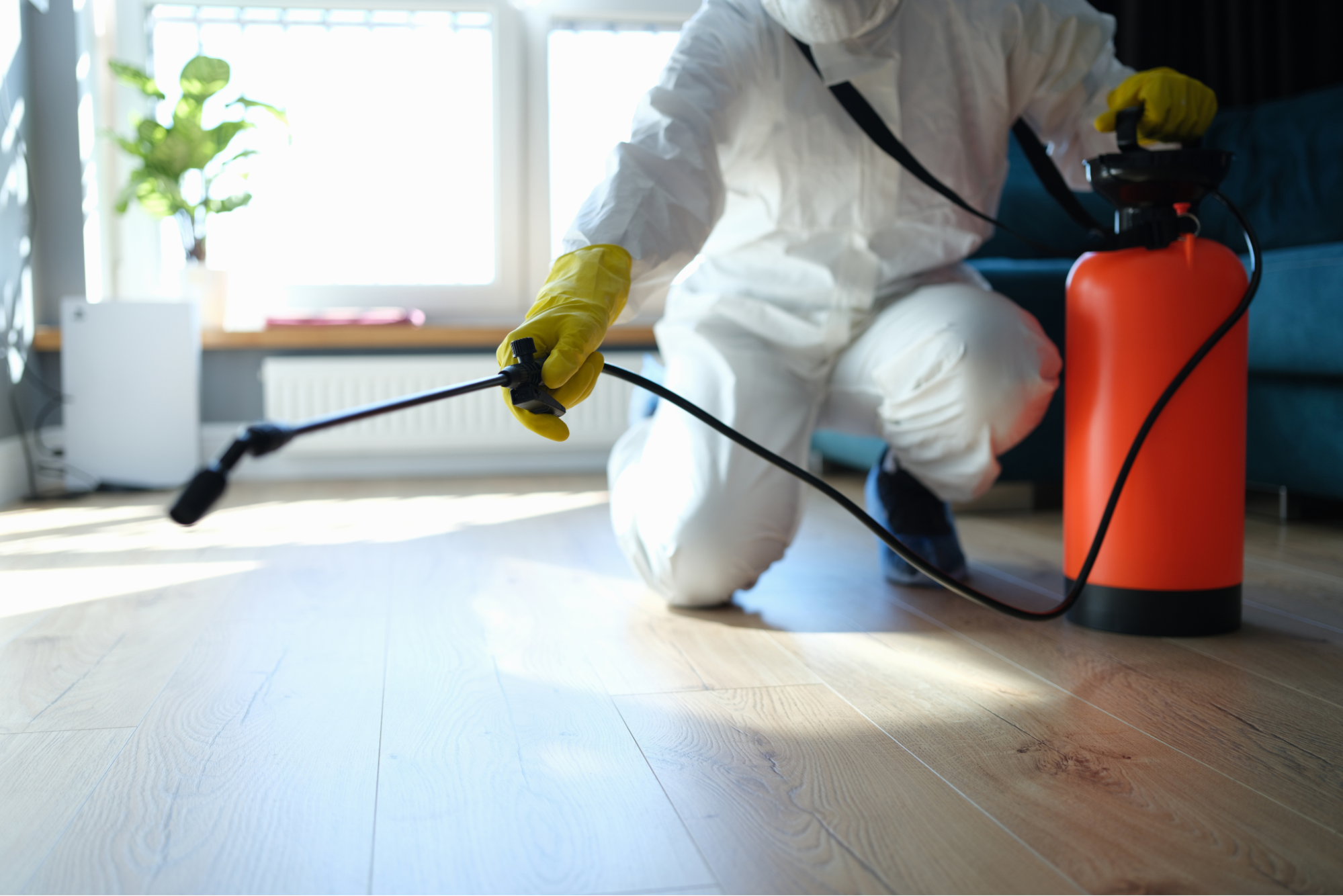Specialist A1 Charlotte Bed Bug Exterminator - High Quality Service Assured
Specialist A1 Charlotte Bed Bug Exterminator - High Quality Service Assured
Blog Article
Bed Bug Treatment Breakdown: Comparing Chemical Vs. Non-Chemical Solutions
In the realm of parasite control, especially when handling the relentless problem of bed pests, the choice in between chemical and non-chemical therapy options can be a pivotal one. Both techniques use distinctive benefits and downsides, affecting factors such as efficiency, safety and security considerations, and general price. By checking out the nuanced details of each approach, a clearer understanding of which path to seek in attending to a bed bug invasion can be attained.
Efficiency of Chemical Therapies
Chemical therapies for bed bug problems have actually been commonly acknowledged for their rapid and potent effectiveness in eradicating these bugs. When considering the performance of chemical treatments, it is essential to comprehend that they can offer a complete and quick service to a bed bug trouble. Specialist pest control operators usually count on pesticides to target bed insects at different stages of their life process, consisting of eggs, adults, and fairies. These chemicals typically work by disrupting the bed pests' nerve system, resulting in paralysis and ultimate fatality.
In addition, chemical therapies have the benefit of using residual impacts, meaning that they can proceed to eliminate bed bugs even after the preliminary application. This recurring action is especially helpful in combating any possible re-infestations. Furthermore, the rapid action of chemical treatments can bring relief to individuals encountering severe bed insect problems, allowing them to restore control of their space rapidly.
Security Problems With Chemical Solutions
One crucial element that requires cautious factor to consider when using chemical remedies for bed insect therapy is making certain the security of owners and the atmosphere. Exposure to specific chemicals made use of in bed insect treatments can lead to respiratory system problems, skin irritation, or other adverse reactions, specifically in individuals with pre-existing conditions or level of sensitivities.
Furthermore, the ecological impact of chemical services is an additional significant consideration. Some chemicals used in bed insect therapies might be damaging to beneficial bugs, wild animals, and ecosystems if they leach into the dirt or water supply. It is important to utilize chemical therapies judiciously, complying with safety and security standards, and considering much less poisonous alternatives to reduce these risks and make certain the effective and risk-free monitoring of bed insect problems.
Advantages of Non-Chemical Methods
Thinking about the potential safety and security worries and environmental influence connected with chemical solutions for bed pest treatment, discovering non-chemical methods offers an appealing alternative with numerous unique advantages. Non-chemical therapies are ecologically friendly, as they do not add to air or water contamination, making them a sustainable choice for insect control.
Additionally, non-chemical services can be efficient in targeting bed bugs, including hard-to-reach areas where chemical treatments might not pass through - A1 charlotte bed bug exterminator. Methods such as heat treatment, vacuuming, steam cleaning, and mattress coverings provide comprehensive elimination without the click reference usage of dangerous chemicals.
Limitations of Non-Chemical Treatments

In addition, non-chemical treatments usually need numerous applications to accomplish effective elimination. This can be lengthy and might not constantly guarantee total removal of all bed pests and their eggs, particularly in surprise or hard-to-reach areas.
Furthermore, the success of non-chemical therapies greatly depends on proper application and thoroughness, which can be testing for people without professional expertise. Insufficient application of non-chemical techniques might lead to insufficient removal, causing consistent invasions and the requirement for extra treatments.
As a result, while non-chemical therapies have their benefits, it is important to recognize these constraints and consider them when determining one of the most effective approach for taking care of bed pest problems.
Price Contrast: Chemical Vs. Non-Chemical Options
Provided the restrictions related to non-chemical treatments, a crucial aspect to evaluate in the context of bed pest management is the cost comparison in between chemical and non-chemical choices. Chemical treatments usually entail the application of insecticides by professionals, which can range from $250 to $900 per area, depending upon the seriousness of the infestation and the dimension of the area to be dealt with. On the other hand, non-chemical here are the findings treatments like warmth therapy or steam can be more pricey, with expenses ranging from $1,000 to $6,000 for a whole home. While the initial price of chemical therapies may seem reduced, numerous treatments may be called for to completely eliminate the infestation, possibly enhancing the overall expense. On the other hand, non-chemical alternatives may give a much more lasting and environment-friendly solution, although they can be cost-prohibitive for some individuals. Inevitably, when taking into consideration the expense of bed pest treatment options, it is very important to weigh the in advance costs versus the effectiveness and long-lasting sustainability of the picked method.
Conclusion

Considering the prospective security problems and ecological impact associated with chemical options for bed pest therapy, exploring non-chemical methods provides an appealing choice with numerous distinctive benefits.Given the limitations connected with non-chemical therapies, an essential aspect to review in the context of bed bug administration is the price contrast between chemical and non-chemical alternatives. In comparison, non-chemical therapies like warm therapy or vapor can be extra pricey, with prices varying from $1,000 to $6,000 for a whole home. While the first price of chemical therapies might seem lower, multiple treatments may be required to fully eliminate the infestation, potentially enhancing the overall cost.In final thought, when comparing chemical and non-chemical bed pest therapy options, it is crucial to consider effectiveness, safety, advantages, my explanation restrictions, and expense.
Report this page